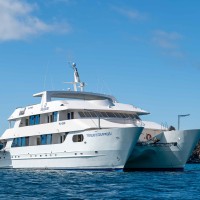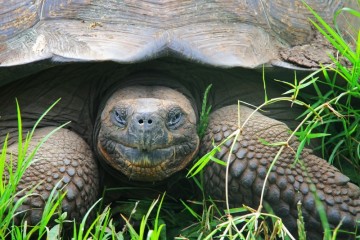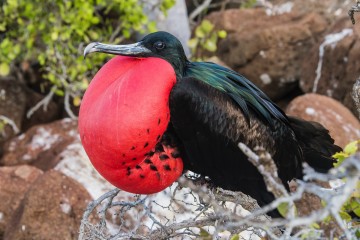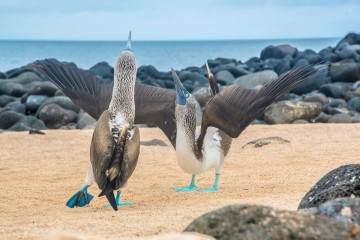Galapagos: Treasure of Galapagos | 7 days
Tour Overview
Experience a magical week in the Galapagos, onboard the Treasure of the Galapagos, discover the highlights of the western islands Fernandina and Isabela.
Our stable catamaran allows you to explore the bays, coves, stunning landscapes and wildlife of the Galapagos Islands with 16 passengers and an expert naturalist guide.
Venture around the seahorse-shaped island of Isabela, and call in at Fernandina Island, the virtually untouched western islands of the Galapagos. Make the most of your time and visit 2 sites a day! We visit the Charles Darwin research centre to learn about the Galapagos Giant tortoise, beautiful El Eden islet on Santa Cruz, and Dragon Hill with is large population of marine iguanas. Snorkel with an array of tropical fish, white-tip reef sharks & rays, explore wetlands to spot the Galapagos flamingo, and walk and hike on the islands, including Sierra volcano. Western Fernandina island with remote and pristine nature is another crown jewel of the Galapagos. Look out for Galapagos fur seals, sea lions, flightless cormorants, large marine iguanas and penguins near the equator!
Ask us for other exciting itineraries on the Treasure of the Galapagos
Viva's Best Bits...
A once in a lifetime naturalist cruise - It is not uncommon for dolphins to escort our catamaran, or for frigatebirds to glide for hours above the Sun Deck, which offers you an excellent lookout for whale watching too.
Puerto Egas, a favourite site on Santiago is great for wildlife, and the best place in the archipelago to observe Galapagos fur seals
Virgin Fernandina & isolated west-coast of Isabela make you an eye-witness of evolution. Be sure to look out for the endemic Galapagos penguins and flightless cormorants along the shoreline.



